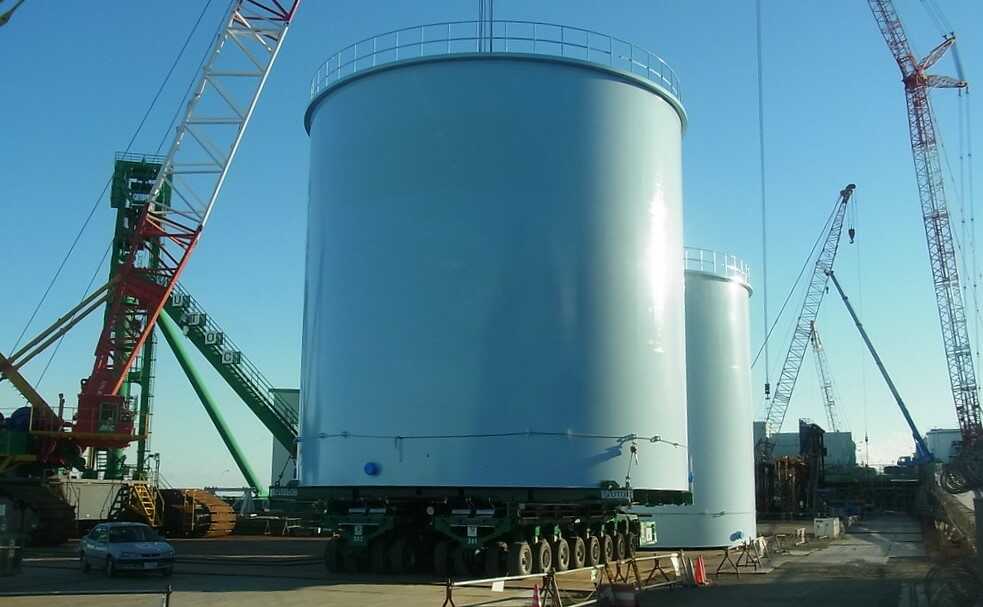Japan plans to release treated radioactive water from the 2011 Fukushima nuclear power plant meltdown into the Pacific Ocean in about two years.
Water has been used to keep three reactors under control, and has been stored in water tanks that now hold about 1.3 million tonnes of radioactive water, enough for about 500 Olympic-sized swimming pools.
The SMC asked experts to comment on whether the environment, human health, or New Zealand could be affected.
Dr Joe O’Callaghan, Coastal Physicist, NIWA, comments:
“Ocean gyres are a large system of ocean currents formed by global wind patterns and forces created by Earth’s rotation. In the Pacific Ocean there are two main ocean gyres – the North and South Pacific Gyres.
“Japan’s proximity to the North Pacific gyre means that treated outflows from the Fukushima plant would initially move northwards and continue in a clockwise circulation around the North Pacific Ocean. As the two Pacific gyres are separated by the Equator, they are essentially disconnected. So, we’d expect little or no impact of the Fukushima outflows in the South Pacific region or around New Zealand’s oceans.
“Ocean currents also flow several kilometres below the surface, like the global ocean conveyor belt. But since deep currents only flow northwards in the Pacific Ocean – through the Kermadec-Tonga trench and onwards through North Pacific abyssal waters, there is not expected to be any signals in the deep ocean either.”
No conflict of interest.
Dr David Krofcheck, Senior Lecturer in Physics, University of Auckland, comments:
“In its own form, this water could be dangerous to human health. But if there’s successful removal – maybe a second run-through the ALPS system that removes radioactive isotopes from water – then there’s hardly any risk at all from diluting this water and releasing it into the ocean again. I see very very minimal risk in that – get your Covid shot instead of worrying about this.
“But they do need to re-filter this water. It was originally hoped they would only have to do it once, but it looks like about 70 per cent of the water needs to be filtered again, according to the data I’m looking at from the Japanese TEPCO and the International Atomic Energy Agency.
“That leaves the question about Carbon-14 brought up by Greenpeace. Carbon-14 is a very useful tool in science, it’s a radioactive form of carbon used to date ancient objects. But it comes from the atmosphere naturally, we’re bombarded by it daily and there’s gigatonnes of it already in the oceans. The Carbon-14 in the treated water is still a small amount compared to how much is already in the ocean, so I’m not worried about that. There are well-known technologies for removing Carbon-14 and that’s something Japan may or may not want to consider in the coming two years.”
No conflict of interest.
Our colleagues at the Australian Science Media Centre have also gathered expert reaction:
Associate Professor Nigel Marks is a researcher in the Discipline of Physics & Astronomy at Curtin University:
“The optics are terrible, but the Japanese government is actually doing the right thing in releasing treated wastewater from the Fukushima plant into the ocean. The stricken power plants still need to be cooled, generating an ever-increasing amount of water containing radioactive hydrogen, also known as tritium.
“Temporary storage tanks are bursting at the seams, and the radioactive water has to go somewhere. By diluting the tritium/water mixture with regular sea water, the level of radioactivity can be reduced to safe levels comparable to those associated with radiation from granite rocks, bore water, medical imaging, airline travel and certain types of food.”
Tony Irwin is a visiting lecturer at the Australian National University. He is also Chairman of the Engineers Australia Sydney Division Nuclear Engineering Panel:
“Tritium is found in atmospheric vapour, rainwater, seawater and tap water.
“Particularly all nuclear power plants produce tritium during operation and discharge it in accordance with international standards and regulatory limits. These include nuclear power plants in South Korea and China.
“Fukushima has around 900 TBq of tritium stored in tanks ( T = 10 power 12). Their regulatory concentration of tritium in seawater is 60,000 Bq/litre.
“For comparison, a twin reactor power station in France has an annual discharge limit of 80 TBq/year. In the UK, Heysham power station has an annual limit of 1,200 TBq/year and discharges about 390 TBq/year. Reprocessing plants discharge even more tritium, over 10,000 TBq/year . The stored water at Fukushima could be safely discharged over several years.
“The WHO drinking water standard is 10,000 Bq/litre, the standard in Australia is 76,000 Bq/litre. Tritium is a low level beta emitter low hazard, which decays to helium. The standard for just the release of groundwater at Fukushima is 1,500 Bq/litre – several times lower than drinking water standards. Adoption of very low limits gives people the impression that any amount of radiation is dangerous, whereas we safely live with radiation every day.
“As recommended by the IAEA, Japan could follow international practice and discharge this water over a period of years without harm to people or the environment.”
